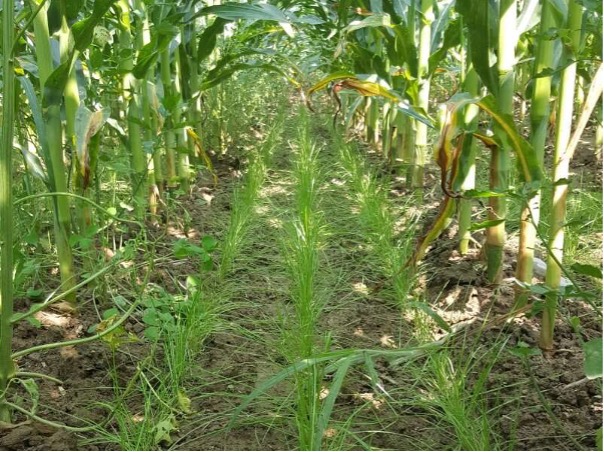This article examines the principles of maximizing photosynthesis and minimizing tillage in regenerative agriculture. It emphasizes continuous cover cropping, plant diversity, and optimal nutrient and water management to enhance photosynthesis. Additionally, it discusses minimizing tillage practices together with facilitating practices to preserve soil health. The integration of these techniques fosters carbon sequestration, improves soil resilience, and increases crop productivity, ultimately leading to sustainable farming with reduced input costs.
In regenerative agriculture, the two key principles of maximizing photosynthesis and minimizing tillage are essential for improving soil health, increasing yields, and ensuring long-term sustainability. Achieving both requires a well-rounded approach that focuses on plant health, soil structure, and integrated management practices.
Photosynthesis drives plant growth by converting sunlight, water, and carbon dioxide into energy and sugars. To enhance this process, it is essential to maintain soil coverage with living plants throughout the year. Continuous cover cropping ensures that photosynthesis continues even between cash crop seasons. Utilizing a variety of cover crop species such as legumes, grasses, and brassicas maintains constant biological activity in the soil, which in turn benefits healthy crop production. Minimizing tillage preserves soil structure, enhances microbial life, and prevents soil carbon loss. Implementing no-till or minimum-till systems avoids deep ploughing, thereby maintaining soil aggregates, reducing erosion, and retaining organic matter.
The following are ways to increase photosynthesis on agricultural fields:
- Relay cropping involves planting a second crop before the first is harvested, ensuring continuous plant cover. This practice extends the photosynthetic period, utilizes residual nutrients, and improves soil structure, leading to higher overall productivity.
- Cover crops such as legumes and grasses, protect the soil during off-seasons, enhance organic matter, and fix nitrogen. Their continuous leaf surface maintains photosynthetic activity, prevents erosion, and improves water retention.
- Perennials like alfalfa or fruit trees, offer year-round photosynthesis, deep root systems for nutrient access, and reduced soil disturbance. Their longevity stabilizes ecosystems and enhances carbon sequestration.
- Crops grown through winter such as winter wheat, maintain green cover and photosynthetic activity during colder months. This practice improves soil health, reduces nutrient leaching, and provides an early harvest.
The following are ways to increase soil health and reduce the need for tillage:
- Organic amendments like compost and manure enrich soil fertility, enhance microbial activity, and improve soil structure. Nutrient-rich soils support robust plant growth and prolonged photosynthetic efficiency.
- Minimizing tillage such as no-till, strip-till, vertical tillage and non-inversion tillage preserves soil structure, soil moisture and microbial life. These elements are essential to producing healthy crops together with sustaining photosynthesis.
- Livestock integration offers natural soil fertilization through manure, enhances nutrient cycling, and promotes pasture diversity. Rotational grazing ensures continuous plant growth and photosynthesis.
- Balanced nutrient application based on soil tests, ensures optimal plant health. Precision nutrient management prevents deficiencies that can limit photosynthesis.
- Rotating crops disrupts pest cycles improves soil nutrients, and enhances biodiversity. Diverse crops ensure year-round photosynthetic activity and reduce soil depletion.
- Integrated Pest Management (IPM) minimizes chemical use, preserving beneficial insects and maintaining plant health. Healthy crops with fewer pests maintain higher photosynthetic rates.
Combining maximum photosynthesis with minimal tillage results in increased carbon sequestration, improved soil health, and higher water-holding capacity. This approach enhances root growth due to better soil structure, improves nutrient cycling driven by a thriving soil biology, and provides greater resilience against droughts and heavy rains. Ultimately, farmers benefit from long-term sustainability, improved yields, and reduced input costs.
